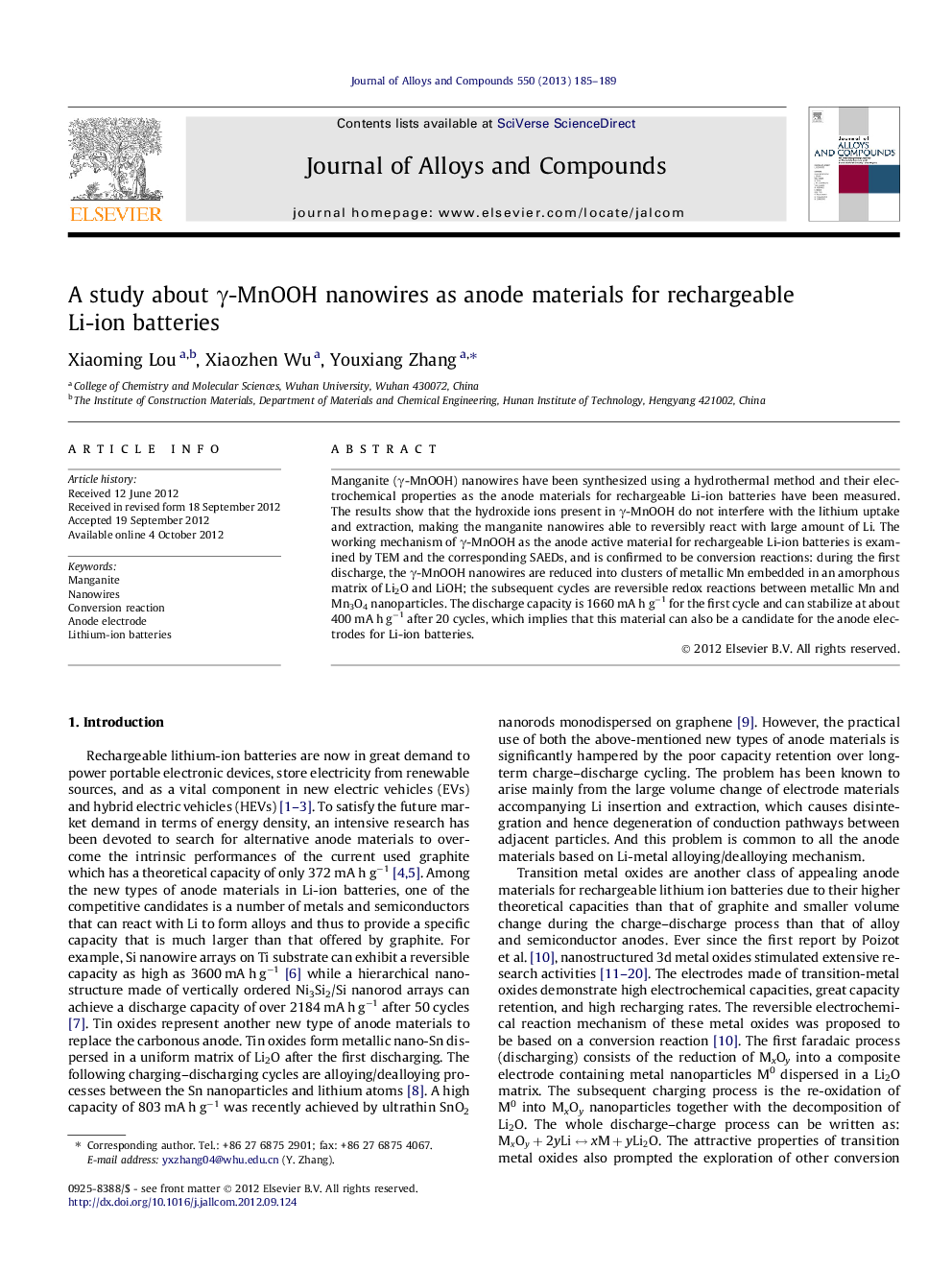| Article ID | Journal | Published Year | Pages | File Type |
|---|---|---|---|---|
| 1615067 | Journal of Alloys and Compounds | 2013 | 5 Pages |
Manganite (γ-MnOOH) nanowires have been synthesized using a hydrothermal method and their electrochemical properties as the anode materials for rechargeable Li-ion batteries have been measured. The results show that the hydroxide ions present in γ-MnOOH do not interfere with the lithium uptake and extraction, making the manganite nanowires able to reversibly react with large amount of Li. The working mechanism of γ-MnOOH as the anode active material for rechargeable Li-ion batteries is examined by TEM and the corresponding SAEDs, and is confirmed to be conversion reactions: during the first discharge, the γ-MnOOH nanowires are reduced into clusters of metallic Mn embedded in an amorphous matrix of Li2O and LiOH; the subsequent cycles are reversible redox reactions between metallic Mn and Mn3O4 nanoparticles. The discharge capacity is 1660 mA h g−1 for the first cycle and can stabilize at about 400 mA h g−1 after 20 cycles, which implies that this material can also be a candidate for the anode electrodes for Li-ion batteries.
► Manganite nanowires were tested as the anode materials for Li-ion batteries. ► The OH– ions present in γ-MnOOH do not interfere with the lithium uptake and extraction. ► The capacity of this material stabilizes at about 400 mA h g−1 after 20 cycles. ► The working mechanism for the first discharge may be: γ-MnOOH+3Li++3e-→Mn+Li2O+LiOHγ-MnOOH+3Li++3e-→Mn+Li2O+LiOH. ► The working mechanism for the following cycles may be: Li2O+3/4Mn↔2Li++1/4Mn3O4+2e-Li2O+3/4Mn↔2Li++1/4Mn3O4+2e-.
